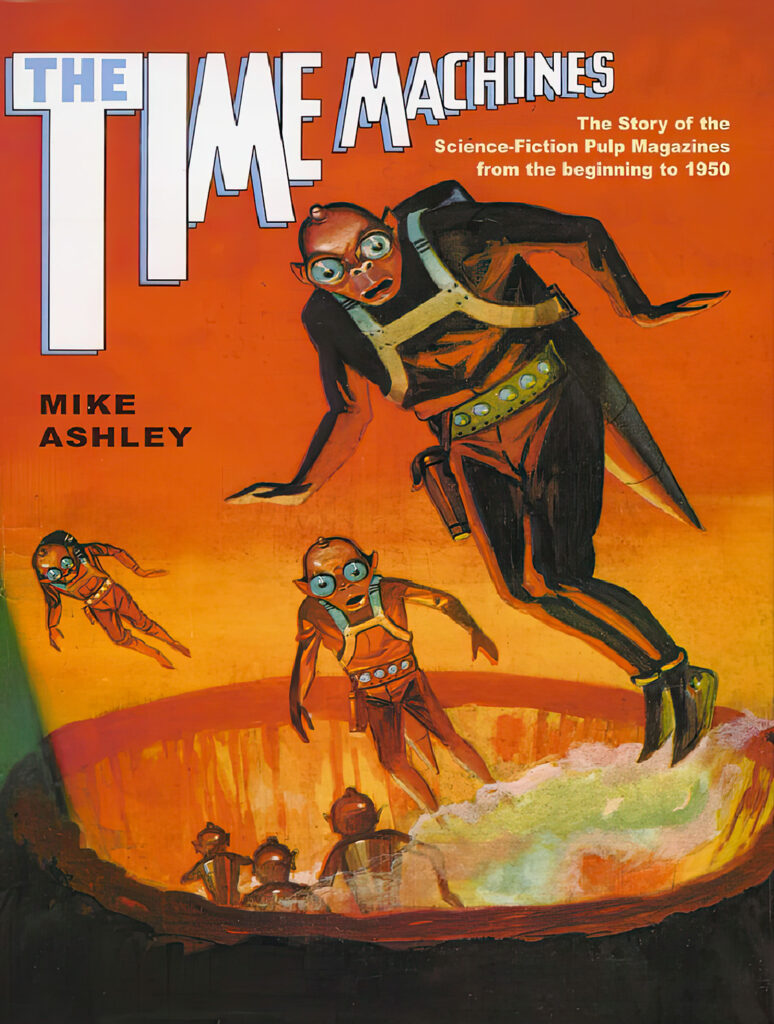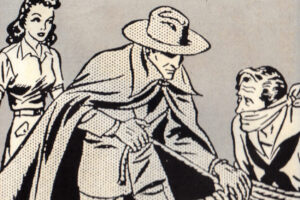 One of his works is the four-volume History of the Science-Fiction Magazine, which consists of:
One of his works is the four-volume History of the Science-Fiction Magazine, which consists of:
- The Time Machines: The Story of the Science-Fiction Pulp Magazines from the Beginning to 1950 (2000)
- Transformations: The Story of the Science Fiction Magazines from 1950 to 1970 (2005)
- Gateways to Forever: The Story of the Science-Fiction Magazines from 1970 to 1980 (2007)
- Science Fiction Rebels: The Story of the Science-Fiction Magazines from 1981 to 1990 (2016)
While as a long-time science-fiction fan, I am interested in the whole series, as well as several of his anthologies. However, as this blog is focused on pulp-magazine fiction, I’ll only be reviewing the first volume. And that’s appropriate because for many it was science fiction emerging in the pulp magazines that brought this genre to where we know it.
Ashley uses the appearance of Amazing Stories in 1926 as his “starting point.” The Time Machines volume starts off by covering what happened before this starting point. And as the author is British, he covers things in both the U.K. and the U.S.
This is important as there was science fiction being published in places and influencing each other. After all, there are the works of Jules Verne, H.G. Wells, and others before that. Science-fiction stories were appearing in various magazines. This is covered along with American dime novels, in particular The Steam Man of the Prairies and Frank Reade and the like.
This leads into the pulp magazines, which will include science-fiction works, as genre-specific pulps would take a while to come about. There is a section on Hugo Gernsback, who incorporates science fiction into his science and technology magazines. And Ashley covers many of the early greats of pulp science-fiction writers, such as Edgar Rice Burroughs, Homer Eon Flint, Ray Cummings, A. Merritt, and others. And covers the start of specialized pulps, giving us The Thrill Book, and later Weird Tales. And, of course, he covers the science-fiction pulps. We get a good history of the development of the various science-fiction pulps by different companies as they competed with each other in the early 1930s.
The third chapter kicks off with 1936 when there were basically just two science-fiction pulps: Amazing Stories and Astounding Stories. But we would soon get the various science-fiction-tinged character pulps, not just Doc Savage but also The Spider, Operator #5, G-8, and others. We then get Thrilling getting into science fiction and the rise of John W. Campbell and his longtime influence on sf pulps, for good or bad. U.K. sf magazines aren’t overlooked either.
The fourth chapter is on the “golden age,” given here as starting in 1939. New magazines and publishers were emerging, such as Martin Goodman‘s Red Circle line. And new authors were coming to the fore as well. The fifth and final chapter covers the post-war period. We see the changes to sf after the war, how atomic power and the postwar views affected it. And he also covers topics like the Shaver Mystery and more.
The volume ends with four appendices. One gives information on science-fiction magazines from different countries. The second gives a summary of science-fiction magazines. All the ones you’d expect are here, but also included are several, though not all, of the character pulps. While I accept some that are left out (The Phantom Detective, etc), others I felt should have been included, like The Avenger, Secret Agent X, and a couple of others. The third is a directory of editors and publishers. And fourth is a directory of cover artists. However, having done some recent reviews of these, I think some were left out.
Overall, this is a great work. Unlike too many sf fans (and I’ll include pulp fans), most don’t seem to bother learning more about the genre and its history. I’ve obtained and read many sf-history books, so a lot of what is covered here isn’t so much new, but Ashley brings it all together in a more cohesive narrative. If there is any criticism, it is that I like to get cover and interior artwork and photos of people and the like, and there is none. But you can get that elsewhere.
As yet, I haven’t gotten the other volumes. But as they don’t deal with pulp magazines, I won’t be reviewing them here.



